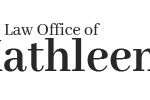
by Kathleen Lynch | Feb 16, 2016 | Trademark Service Mark
If you want to be a superhero, you’re going to have to create your own logo. In a recent California court case, DC Comics v. Mad Engine, Inc., the court refused to dismiss an action brought by DC Comics against Mad Engine for trademark infringement. Mad Engine was selling t-shirts with a “dad” logo in red and yellow on a blue shirt. The logo was a five-sided shield similar is style to the Superman “S” that appears in DC Comics books and movies.
Mad Engine asked the court to dismiss the lawsuit on the basis that the “dad” logo was a parody of the Superman logo. The court rejected the argument and the case now moves on to trial.
What’s the take away here? Even if you think your mark is a parody of another mark. The owner of the other mark may not share your sense of humor. Think twice before proceeding with a mark like that.
Protecting your innovative developments is critical to any organization. Having the right person to help you make that decision is important. The Law Office of Kathleen Lynch PLLC is designed to help businesses such as yours keep ahead of the game. The first telephone consultation is free. Email us at [email protected].
As an aside, I’ll be speaking on Thursday, February 18th at the NC Bar Association Business Law Section Annual Meeting on a panel discussion of IP issues in Pinehurst NC. Anyone thinking of attending, I hope you do as it is shaping up to be an interesting program. I’ll also be there on behalf of NCLEAP (North Carolina Lawyer Entrepreneur’s Assistance Program) recruiting new volunteers. If you’re there, please come and say “hello”.

by Kathleen Lynch | Feb 12, 2016 | Intellectual Property
A recent Federal Circuit Court of Appeals decision highlights the need to ensure that contracts with third parties ensure that any intellectual property developed is owned by the company. In TriReme Med., LLC v. AngioScore, Inc., TriReme sued to correct inventorship on some AngioScore patents directed to angioplasty balloon catheters. AngioScore had hired a consultant, Dr. Lotan. Dr. Lotan was not named as an inventor in any of the AngioScore patents at issue. TriReme, motivated by a concern that AngioScore may sue for patent infringement, acquired from Dr. Lotan, all of his interest in the subject AngioScore patents.
AngioScore offered up the consulting agreement executed with Dr. Lotan in defense. AngioScore asserted that it obtained all rights in all inventive works by Dr. Lotan.
The Federal Circuit disagreed. The court found that the agreement did not give AngioScore rights to Dr. Lotan’s inventions developed or made prior to the agreement and remanded the case back to district court to determine whether the language in the agreement grants AngioScore rights in any inventive developments made by Dr. Lotan after that execution of the agreement.
What’s the take away here? When contracting with any third party, be sure to cover all aspects of ownership of any intellectual property developed during the term of the agreement. Also ensure that all parties to the agreement have a clear understanding as to who is entitled to what when dealing with IP developed by the third party either before or after the term of the agreement.
Protecting your innovative developments is critical to any organization. Having the right person to help you make that decision is important. The Law Office of Kathleen Lynch PLLC is designed to help businesses such as yours keep ahead of the game. The first telephone consultation is free. Email us at [email protected].

by Kathleen Lynch | Jul 29, 2015 | Innovation
I recently came across an interesting article in the Economist on the way in which inventions are developed today and in the past. It raises some intriguing points on how developments are handled today, as well as some insights regarding the scope and breadth of innovation over time.

by Kathleen Lynch | Jan 29, 2015 | Entrepreneurship, Patent Prosecution, Start Up Considerations, Trademark Service Mark
Intellectual property is the life blood of many small businesses and entrepreneurial enterprises. Knowing how and what may need protection could mean the difference between success and failure. I set forth below three basic things every entrepreneur and business person should do to protect the intellectual property inherent in any organization.
- Identify your intellectual property
- Before you can protect your intellectual property assets, you need to understand what they are. Intellectual property is a bundle of legal rights. These consist essentially of patents, trademarks, copyrights and trade secrets. Patents are directed primarily to objects of manufacture (things), methods of making or doing something, designs (ornamental aspects of a thing), compositions of matter and plants. If you make devices or compositions of matter, you will likely want to determine whether your device, composition, or methodologies associated with your business may be subject to patent protection. If you make an object, you may also want to consider whether there are any ornamental aspects of your object that may be new and subject to design patent protection.
- If you use trademarks, service marks or logos in connection with the sale of your goods or services, you may want to register those marks or logos nationally or internationally. If your business involves training or educational services, any materials used may be subject to copyright protection. If your business has been successful by using particular strategies or processes that have given it a competitive edge over your competition, you may want to properly identify those strategies as trade secrets. Some methodologies used in manufacturing may be better suited to trade secret protection rather than patent protection.
- Determine whether your intellectual property can be protected
- Once you have identified what you believe to be your intellectual property, you need to determine whether it is protectable under current laws. If you believe your new widget is patentable, a patentability search and assessment is a logical next step. A patentability search and assessment will provide you with the information you need to determine whether there is any meaningful patent protection available to you. This applies to objects, as well as methods, compositions of matter, and designs. A proper patentability search will search all relevant patent records and provide you with the most pertinent documentation of the state of the relevant art. A patent professional can assist with interpreting the search results to determine the scope of patent protection likely available to your invention.
- Similarly, with a trademark or logo, an availability search and assessment is a prudent next step. This involves searching relevant records to provide you with current uses of the same or similar marks or logos. From this information, you can determine whether to proceed with a trademark or service mark registration. A trademark professional can help you make that determination.
- Protect What Intellectual Property You Can
- Once you have identified and determined what rights are available to you, you can proceed with protecting your intellectual property to maximize your competitive advantage. Patentable aspects of any objects, methods, compositions or designs should be protected. Marks or logos available for use and registration should be the subject of US or international trademark or service mark applications.
- Copyrighted materials should be marked with the “©” or “Copyright” followed by the year(s) in which the material was created and name of the owner. Trade secrets, properly identified, should be protected through a series of procedures identified by your organization to ensure confidentiality. This may include, by example, limiting access to certain information, marking documents as “confidential”, ensuring all employees understand their obligations to maintain secrecy of proprietary information, executing confidentiality agreements with third parties where proprietary information may be exchanged.
Protecting your innovative developments is critical to any organization. Having the right person to help you make that decision is important. The Law Office of Kathleen Lynch PLLC is designed to help businesses such as yours keep ahead of the game. The first telephone consultation is free. Email us at [email protected].

by Kathleen Lynch | Nov 18, 2014 | Trade Secrets
A trade secret is the secret sauce of any business. It is information that sets your company apart from you competition and it is information that your competitors would find valuable. The good news about trade secrets is that their life is limitless. The bad news is that once a trade secret has been exposed, it is gone forever.
Trade secrets can include items of information that you may not immediately consider are valuable. But if you think of what your competition might find valuable, your scope may widen. For example, trade secrets may include pricing, customer or supplier lists, employee names and contact information, and manufacturing practices.
Protecting a trade secret from exposure is critical. The first thing to do is identify all of your organization’s trade secrets or otherwise proprietary information. Next, you should limit access to the information only on a “need to know” basis. This means that manufacturing may not need to have access to pricing information, while accounting may not need to know the nuances of some manufacturing techniques that enhance quality.
In addition, employees should be trained on how to handle trade secret information. Once trade secrets have been inventoried, those within an organization designated as “need to know” should understand how to protect the trade secrets entrusted to them. A confidentiality agreement should always be used when disclosing any trade secret information, including agreements with employees.
Protecting proprietary information is critical to any organization. Having the right person to help you make those decisions is important. The Law Office of Kathleen Lynch PLLC is designed to help businesses such as yours keep ahead of the game. The first telephone consultation is free. Email us at [email protected].









